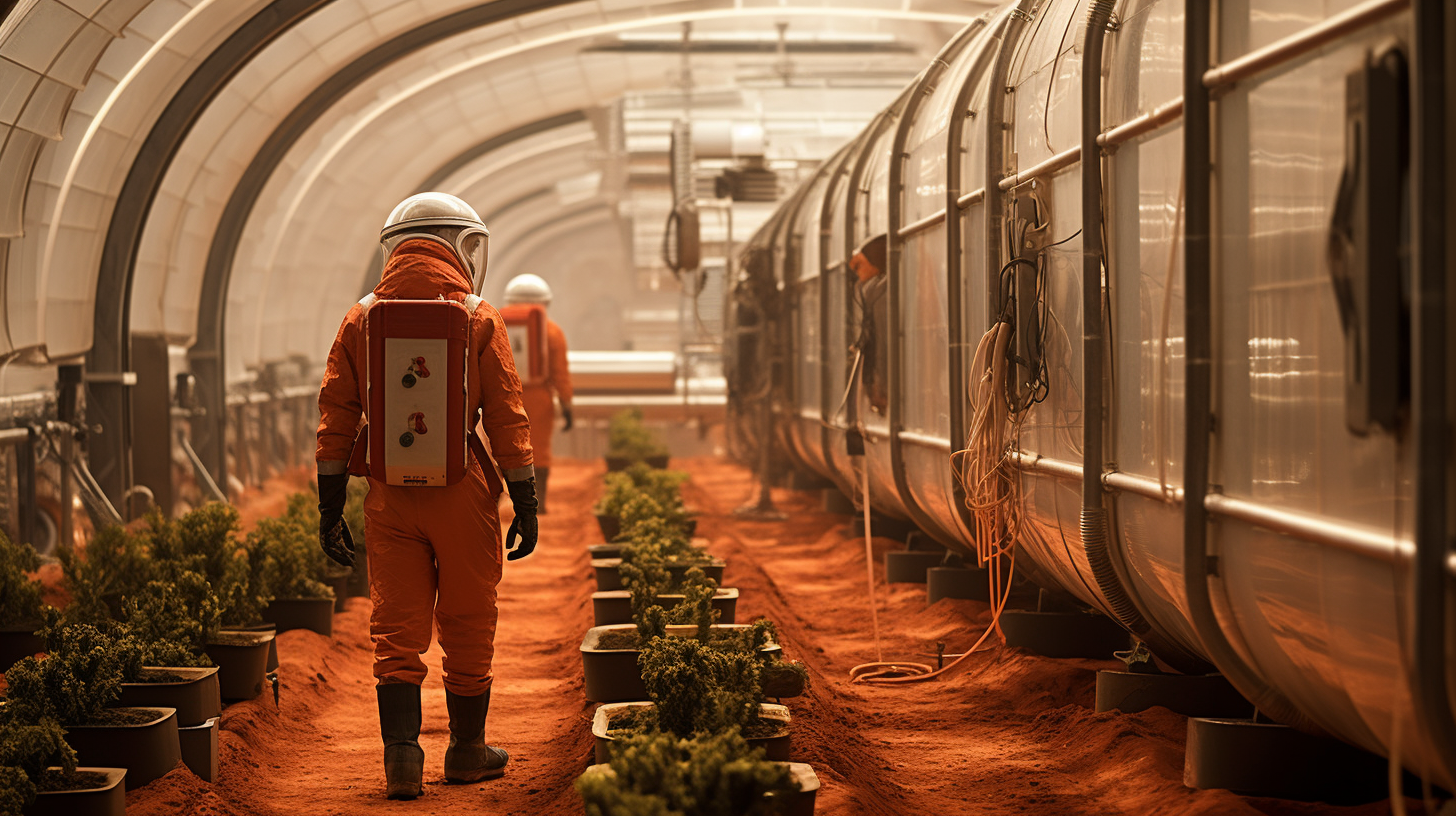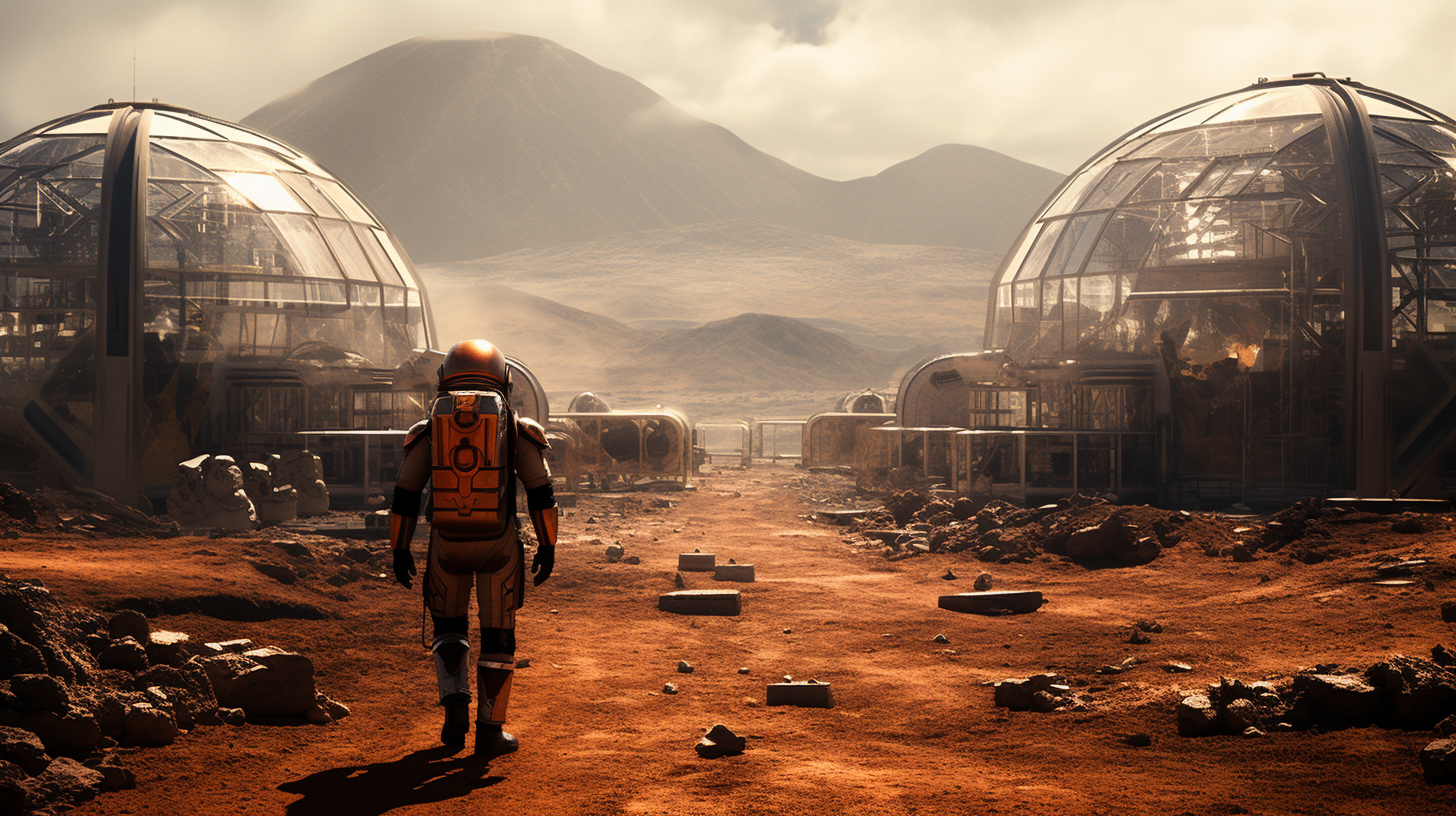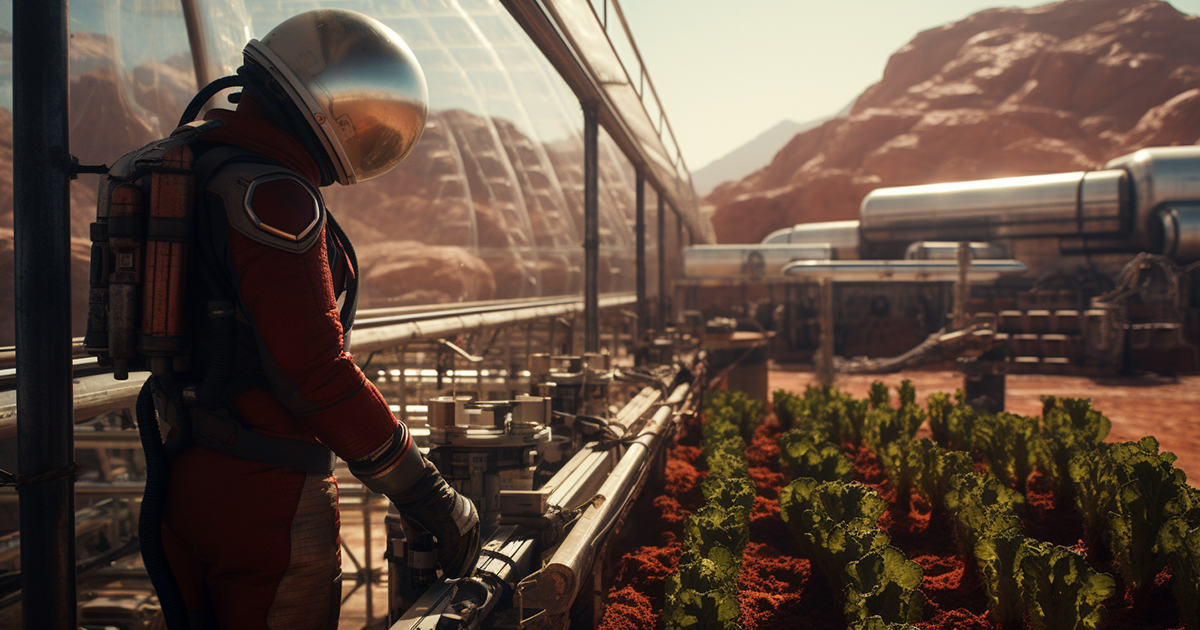A New Chapter in Human Exploration: The Fascination with Mars
Humanity has long been enthralled by the idea of reaching Mars. Now, on the cusp of actualizing this celestial dream, we shift our focus from the mystique depicted in mainstream media to the practicalities of establishing a lasting human presence on the Red Planet. This narrative will explore the innovative approaches being undertaken to transform the barren Martian landscape into a potential home for mankind.
The Martian Existence Challenge: Embracing Extremes
Mars, also known as the “Red Planet,” presents a realm of contrasts. With gravity merely 38% of that on Earth, temperatures fluctuate dramatically from a scorching 70 degrees Fahrenheit during the day to a bone-chilling minus 100 degrees Fahrenheit at night. Moreover, heightened radiation levels and frequent dust storms contribute to the formidable challenge of survival on Mars.

The Path to Martian Settlement: Navigating Challenges
NASA’s blueprint for Mars colonization commences with the deployment of robotic explorers. These mechanized pioneers are tasked with constructing habitats, rovers, and life-sustaining modules. Subsequently, essential supplies and resources are sent forth, laying the groundwork for future human habitation. This systematic strategy acknowledges the immense obstacles presented by Mars’ inhospitable environment.
Pioneering Agricultural Techniques on Mars
One intriguing aspect of Martian colonization is the imperative to cultivate crops on a planet so unlike Earth. This step is pivotal for ensuring the long-term sustainability of a Martian colony, as reliance on shipments from Earth is neither practical nor viable.
Scientists are delving into the intricacies of farming on Mars. While planting conventional crops like potatoes and cabbages may seem straightforward, the reality is far more complex. Microbial behavior in this extraterrestrial setting poses challenges that demand ingenious solutions.

An intriguing experiment conducted in the Netherlands, using soil reminiscent of Martian terrain, demonstrated successful crop cultivation. Carrots flourished in these conditions, yet achieving self-sufficiency will necessitate extensive time and research. It could be centuries before ample food production sustains a self-reliant Martian population.
A Vision for the Distant Future: Terraforming Mars
In the pursuit of complete autonomy on Mars, the concept of terraforming emerges as a crucial factor. Terraforming involves deliberately altering the Martian environment to make it more Earth-like, conducive to surface agriculture.
Various terraforming concepts have been proposed, many focusing on melting the polar ice caps to release carbon dioxide into the Martian atmosphere, thickening it and creating conditions suitable for liquid water. Nevertheless, experts agree that such transformation remains a distant possibility, potentially centuries away.
Watch the Featured Video Presentation:
Reflecting on the Journey: Embracing a New Frontier
The voyage to colonize Mars is an intricate and multi-faceted expedition encompassing technology, agriculture, and the visionary concept of terraforming. While Mars continues to evoke mystery and wonder, the endeavor to transform it for human habitation demands unwavering dedication and scientific acumen.
As we peer into the cosmic abyss and set our sights on the Red Planet, the challenges ahead loom large, yet so do the possibilities. Mars represents not just a potential new dwelling but also a testament to humanity’s resilient spirit and ceaseless pursuit of the unknown. With time, the dream of Mars colonization may come to fruition, propelling us on an extraordinary odyssey that will forever alter the course of our story.
